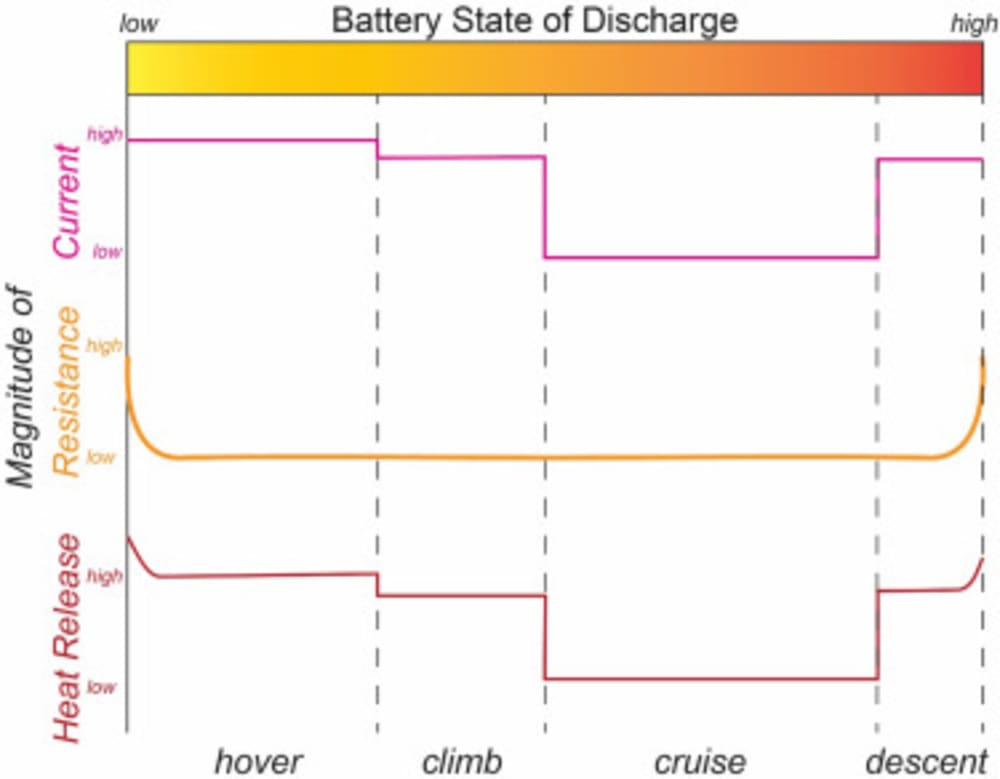
The electric vehicle market is projected at over 90 billion dollars in the next five years with over 200 million electric vehicles on the road by 2030. In the backdrop of this burgeoning EV scenario, a revolutionizing enterprise referred to as eVTOL has been slowly gathering steam in recent years. The term eVTOL (Electric Vertical Take-off and Landing) refers to a new aircraft platform that uses electric power from an onboard energy storage device to perform takeoff hover, climb, cruise, and landing hover functions. Potential applications of versatile aerial platforms include commercial and personal unmanned aerial vehicles (UAVs), small passenger and cargo aircraft, urban air mobility systems, payload delivery, and advanced defense systems. eVTOL electrification is crucial for urban mobility in the next decade. The distinction between Electric Vehicle (EV) battery duty cycles and Electric Vertical Takeoff and Landing (eVTOL) battery duty cycles lies in their operational demands and usage patterns. EVs typically experience relatively consistent and predictable driving profiles, characterized by a mix of urban, highway, and occasional long-distance travel. As a result, EV battery duty cycles involve gradual charge-discharge cycles, with emphasis on energy efficiency and extending the vehicle’s range. In contrast, eVTOL batteries encounter significantly more dynamic and aggressive duty cycles due to the unique demands of hovering maneuvers. These operations require sudden bursts of high power followed by rapid deceleration and frequent changes in state-of-charge. Consequently, eVTOL battery duty cycles involve rapid and intense discharge sequences, placing greater stress on the battery cells and necessitating specific design considerations to accommodate the rapid power fluctuations and thermal management challenges inherent to these flight operations. The demanding operational requirements of eVTOL applications, characterized by rapid and frequent discharge cycles, high power bursts during takeoff and landing, and stringent safety considerations, present formidable challenges for battery chemistries. The efficacy of lithium-ion batteries in meeting these challenges depends on various factors, including energy density, power capability, cycle life, thermal stability, and safety margins. It becomes imperative to comprehensively evaluate and optimize battery chemistries to ensure both reliable performance and long-term viability.
The team at ORNL has embarked on a systematic investigation into the behavior of standard lithium-ion battery chemistries under eVTOL load profiles. The eVTOL load profiles are established by analyzing the power profile of actual eVTOL platforms undergoing specific missions. Through a combination of experimental analyses, including impedance spectroscopy, polarization curve assessments, and tracking of average voltage profiles during specific eVTOL mission segments, this research offers nuanced insights into the performance disparities between different battery chemistries. Our investigation emphasizes the limitations of using capacity retention as a direct comparison metric for eVTOL battery systems, distinguishing the unique operational demands of eVTOL applications from those of Electric Vehicles (EVs). Tracking average voltage profiles during individual eVTOL mission segments provides crucial insights into performance disparities. Collectively, these findings highlight the complex interplay between battery chemistries and eVTOL operational profiles, shedding light on crucial considerations for battery system design and optimization in the pursuit of efficient and reliable eVTOL transportation.
-
Awards
-
 2024 Top 100 Entries
2024 Top 100 Entries
Like this entry?
-
About the Entrant
- Name:Marm Dixit
- Type of entry:teamTeam members:
- Anuj Bisht
- Ilias Belharouak
- Patent status:none









